With my sixth day in Bhutan well underway, my exciting adventures in the country’s capital continued. Come along with me as I try some delicious Indian Nepali food and go for a fungus tea tasting in Thimphu, Bhutan!
My afternoon began at the Motithang Takin Preserve in Thimphu’s Motithang District. This 8-acre wildlife preserve is dedicated to the takin, which is the national animal of Bhutan. The takin is a large, horned mammal with horns and hooves that is found in the Himalayas. It has a head similar to a goat but a body like a cow’s! I’ve never seen anything like it!
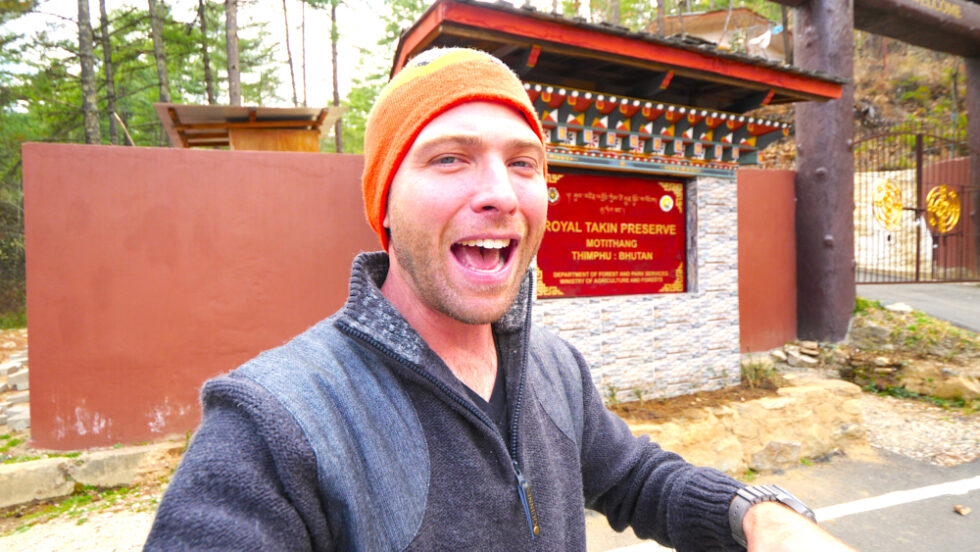
My friend and guide from MyBhutan, Tsheten, joined me at the preserve and told me a legend about the takin that goes back to the 15th century. According to legend, the Tibetan saint known as the “Divine Madman,” Drukpa Kunley, created the takin after the Bhutanese people asked for a miracle.
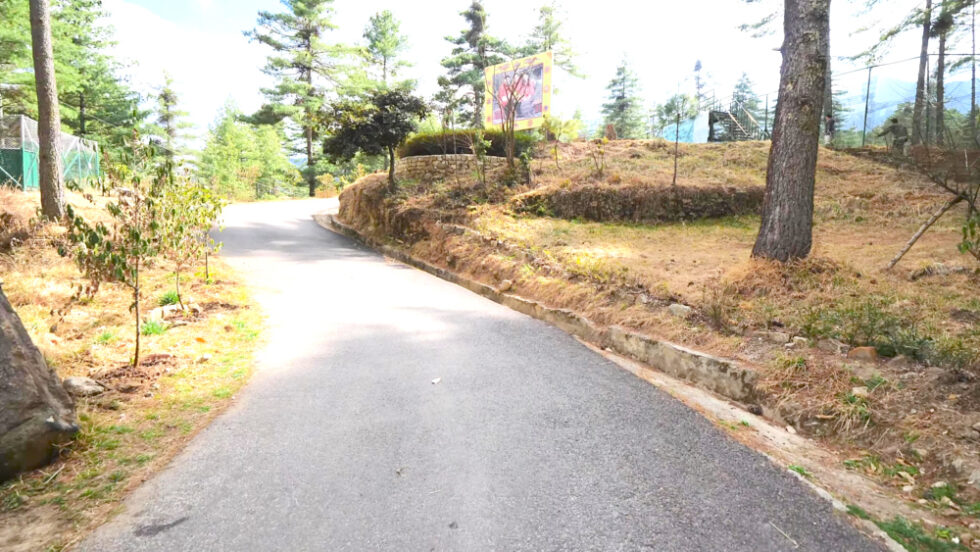
The Divine Madman agreed if they would feed him a whole goat and a whole cow. After he finished eating, the Divine Madman laid out the bones of the animals and placed the skull of the goat on the body of the cow. He said a spell and the animal came to life and went to the meadows to graze. According to the story, the takin has been common ever since!
The takin became the national animal on November 25, 1985. It has long, yellow to brown hair; short, stocky legs; and both sexes have horns that grow up to 25-30 centimeters. They also live between 12-15 years. We also saw a board showing the different bird species in the area.

The preserve is also used as a rehabilitation center. We saw a mountain goat that had lost a leg. We also saw a sambar deer and finally saw the takins. Some of them were just lying down and sleeping. They were beautiful! I’d never seen them before. You can also see them in China and Myanmar.
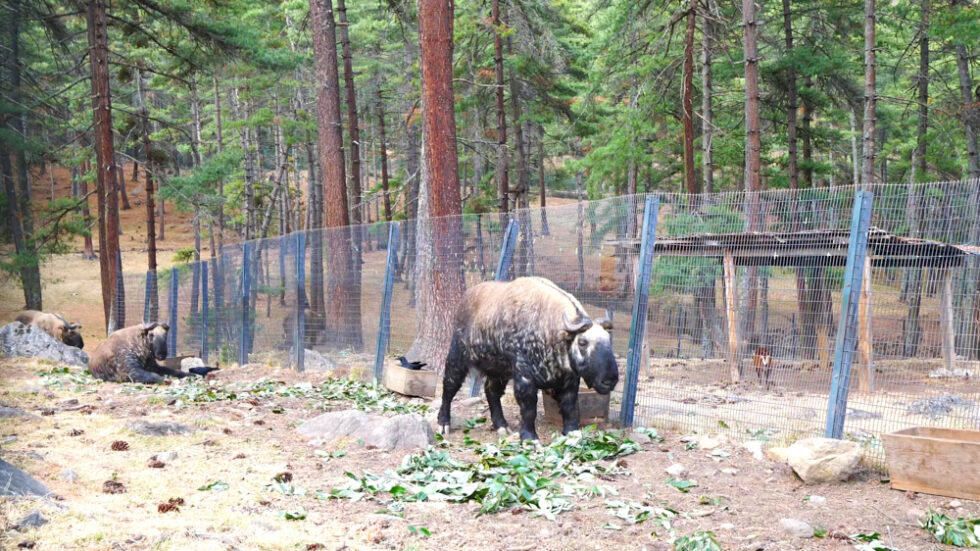
Then, we headed a tea tasting where the tea is made from cordyceps, which is a worm-like creature that’s similar to a caterpillar. Along the way, we passed an area about 15 minutes from the city center where members of Parliament live.
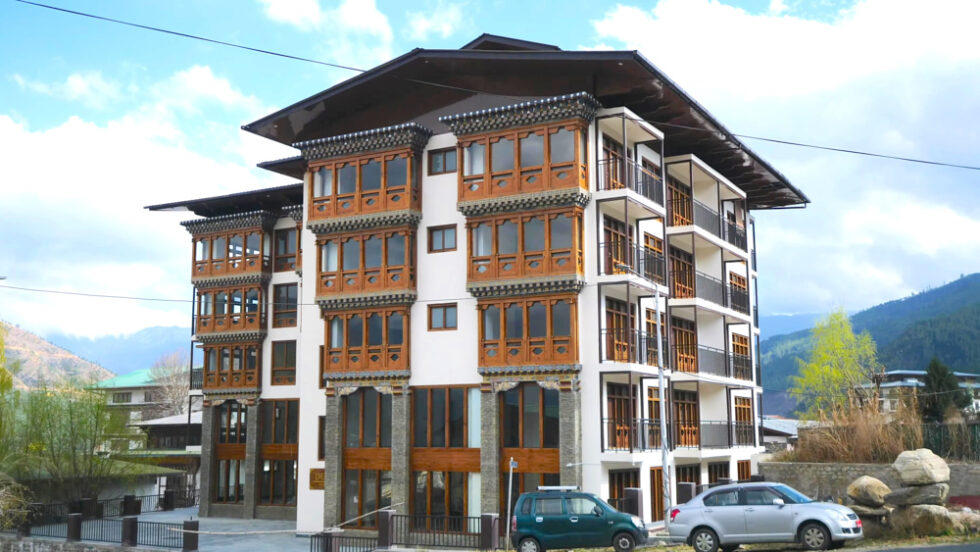
We arrived at Cordyceps Tasting House in the downtown area of the city. It’s a two-minute walk from the Pedling Hotel & Spa. There, the employees showed me some dried cordyceps. You can get some ara with cordyceps in it. I tried a mini shot of it, which was super strong instead of smooth like other varieties I’d tried. The cordyceps in it makes it very strong.
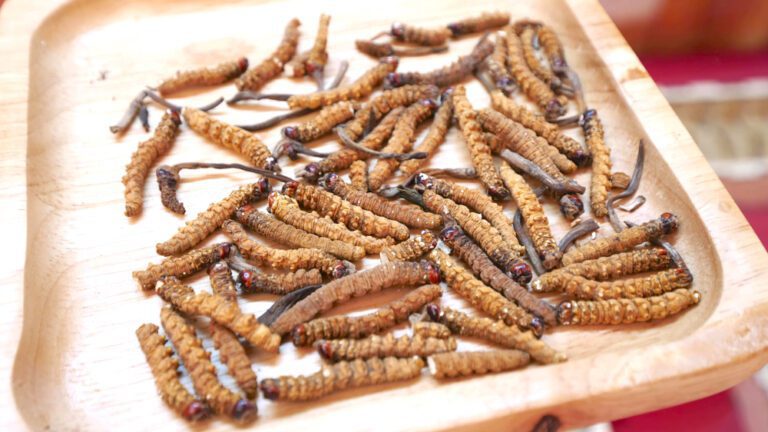
The cordyceps starts as a caterpillar. If it eats a certain fungus, it doesn’t turn into a butterfly and the fungus eats the caterpillar. The dead caterpillar then blooms into a mushroom. That’s what’s mixed with ara and used to make tea! They’re found in the high ranges of the Himalayas. They’re hard to get, so they’re called Mountain Gold!
Next, I tried some 2% tea. I couldn’t tell the difference between it and the 5%, except it was maybe more bitter. I bought some along with a small vial of ara with cordycep. This is the only traditional teahouse in Bhutan! Then, I tried some K5 whiskey with cordyceps. It was really nice. I liked it more than the ara because it was smoother. What an awesome experience!
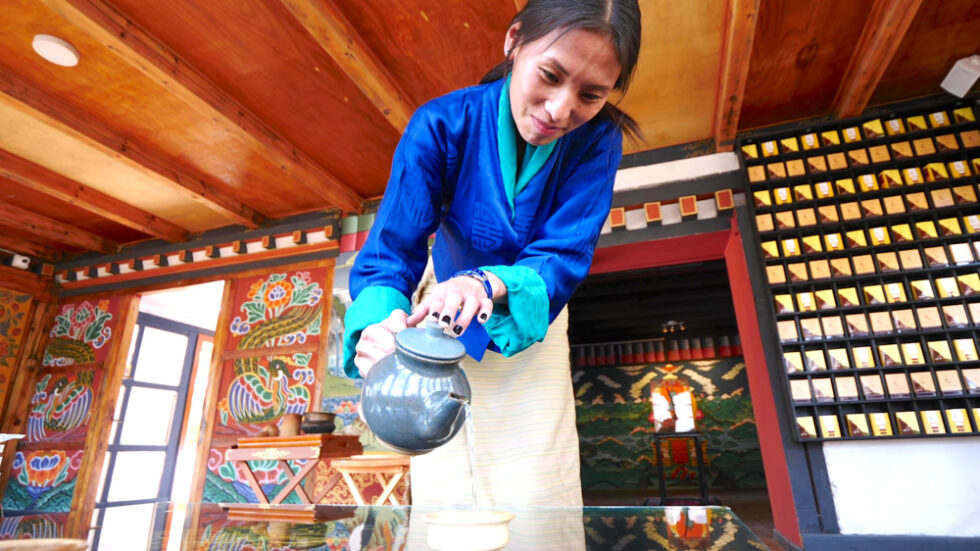
Then, it was time to get some Nepal food instead of Bhutanese dishes at Thakali Kitchen in the downtown area of Thimphu, Bhutan. It was about a 2-minute walk from the Pedling Hotel & Spa. The restaurant is located down a set of stairs to another alley. I loved the atmosphere inside. It was very vibrant and reminiscent of India and Nepal.
Instead of having authentic Indian food, I went with the Special Thakali Thali, or buffalo thali, off of a suggestion from the chef. This is spicy food, which is different from the Indian and Bhutanese cuisines you’ll find in Thimphu, Bhutan.
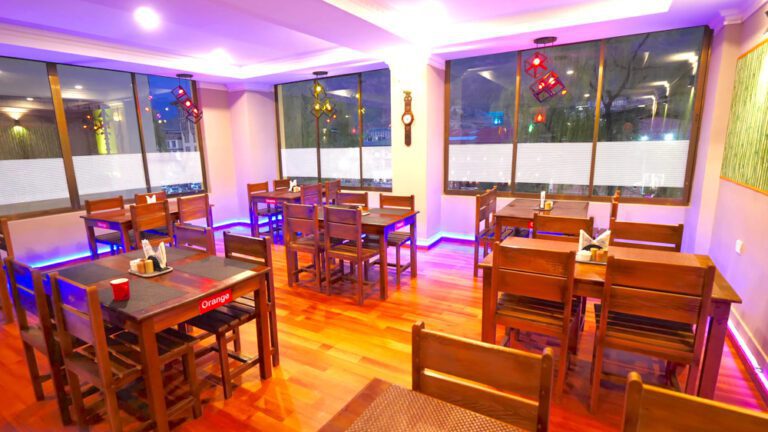
This thali has less masalas and almost no desserts. While I waited, I enjoyed some Zumzin peach wine, which is one of the most popular wines in Bhutan. It was like straight peach and was 12% alcohol. It was so good.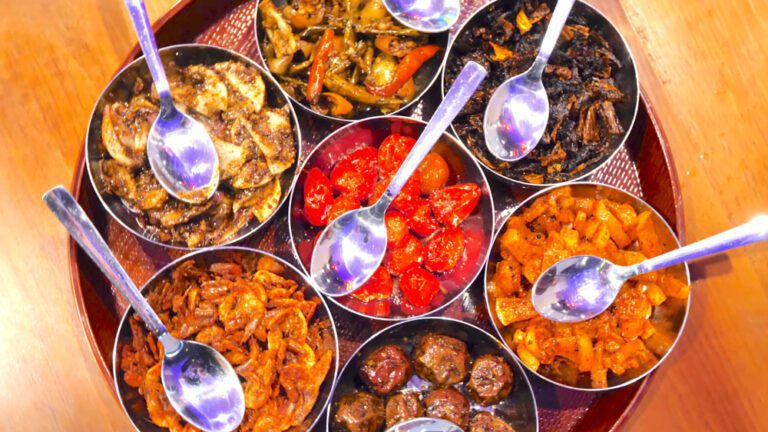
Then, the thali and appetizers arrived! The appetizers consisted of prawn fry, picked radish, mixed pickle with chilies and tomatoes, dried spinach, radish, wild fruit, and round chilies which best for Bhutanese food. These delicious dishes were the part of side food. My buffalo thali contained rice, veg, papad, black lentil soup, and yogurt.
The black lentil soup was so earthy and a little creamy. I removed some of the bowls so I had more room. Then, Tsheten started on his thali and served me some of the appetizers. The buffalo looked nice and fatty. It was like butter and fell apart in my mouth. I liked it so much more than cow beef. It’s softer and gamier, and is more tender. I also loved the curry on it like Indian food. It reminded me of amazing food I had in Kerala!
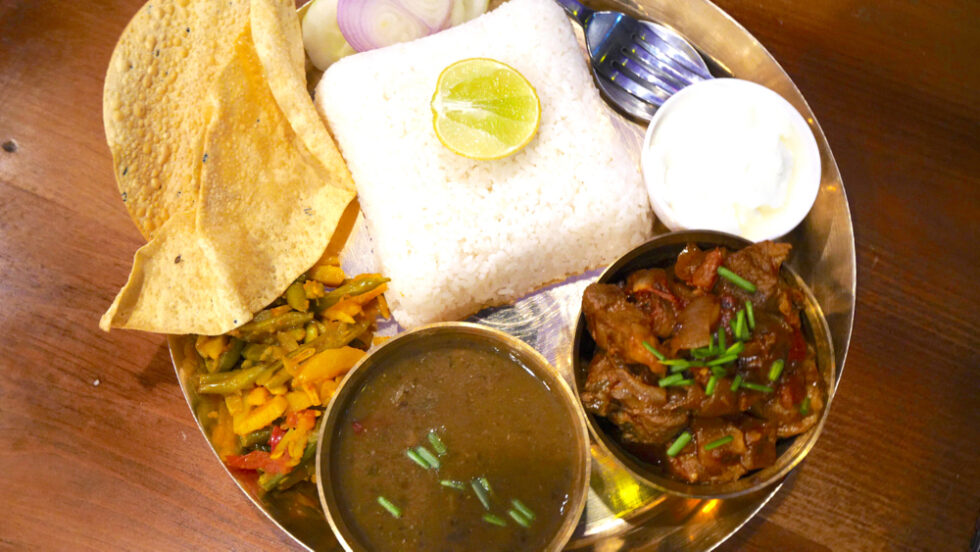
It was so tasty with the rice. The dried prawns were quite spicy and crunchy. Meanwhile, the radish wasn’t spicy, just pickled. The veg with chilies were really delicious, and I loved the dried spinach! The picked berry had very little flesh on it and contained a huge seed. Then, I tried the round chili, which had a spicy juice that hit me right away. Overall it was a spicy dish. It wasn’t unbearable and it only lasted a few seconds.
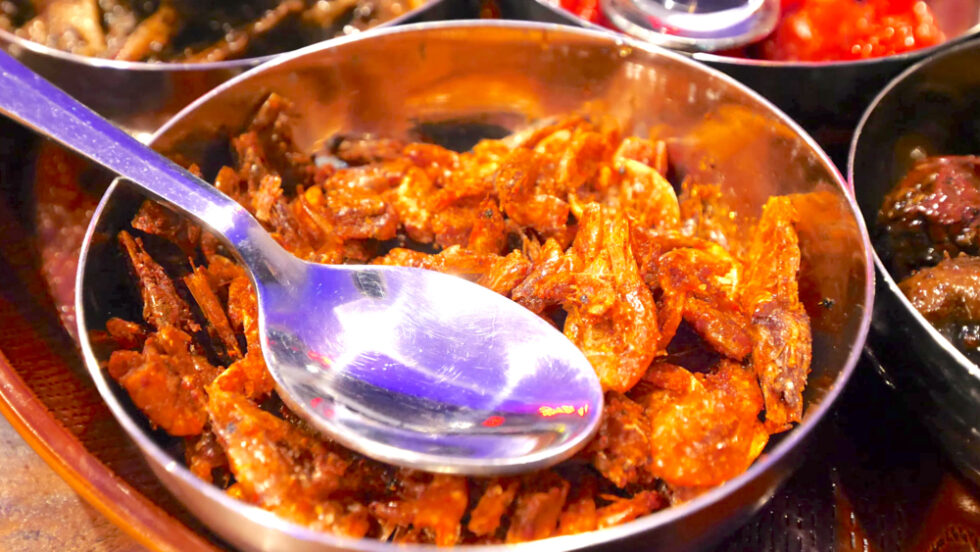
Then, I added my dal to the rice and mixed it well. It was so good. The prawns were the spiciest thing on my plate. It wasn’t brutal but was really good. The round chilies were hot, but they hit you so fast and go away that it’s easy to deal with.
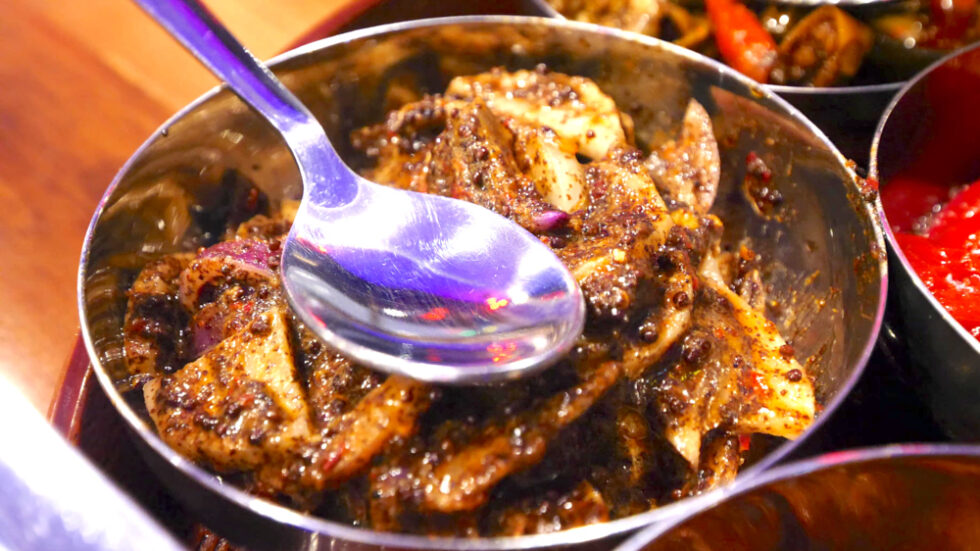
The portions at Thakali Kitchen are huge! I ate half of my buffalo and still had a lot left. It was amazing with the radish! I also couldn’t get enough of the prawns and the radishes, which were like a crunchy water vegetable. Of all the appetizers, the radish was my favorite. It was both crunchy and creamy!
There were so many textures and flavors in this Nepali cuisine in Thimphu, Bhutan! Then, I took a bit of everything with the papad. It was too good! Check out my other video in which I am testing Bhutanese food/ Bhutanese cuisine.
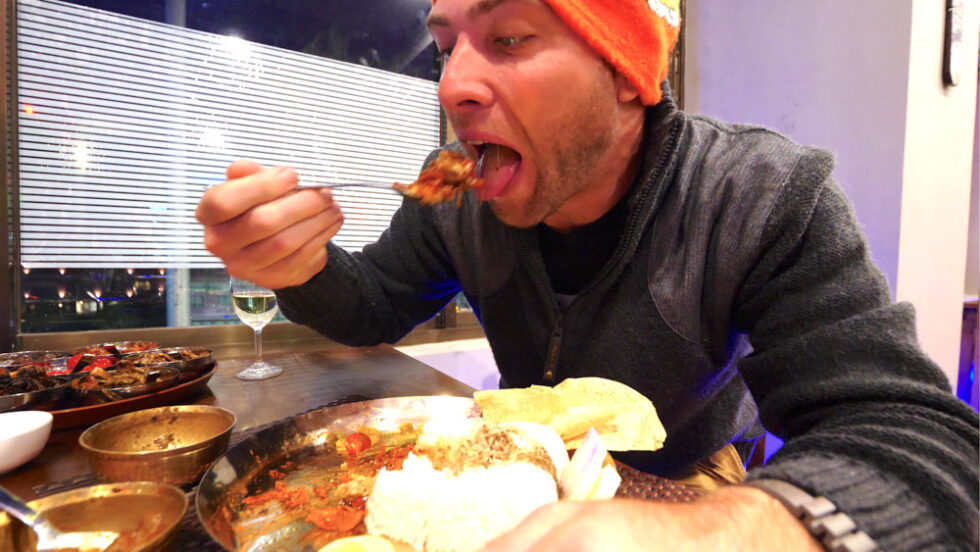
I hope you liked coming with me to have some delicious Nepali food in Thimphu, Bhutan! If you did, please give this video a thumbs up and leave a comment below. Also, please subscribe to my YouTube channel and click the notification bell so you don’t miss any of my travel/food adventures around the world!
Counter
101 Countries • 1432 Cities